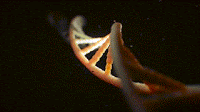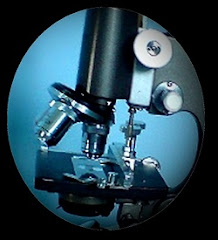The cell is the basic structural, functional, and biological unit of all known living organisms. A cell is the smallest unit of life that can replicate independently. The study of cells is called cell biology.
Organisms can be classified as uni cellular (consisting of a single cell; including bacteria) or multi cellular (including plants and animals). humans contain more than 10 trillion (1012) cells.
Cells are of two types, eukaryotic, which contain a nucleus, and prokaryotic, which do not. Prokaryotes are single-celled organisms, while eukaryotes can be either single-celled or multicellular.
Prokaryotes include two of the domains of life, bacteria and archaea. Plants, animals, fungi, slime moulds, protozoa, and algae are all eukaryotic.
Difference between animal cells and plant cells: The plant cells consists rigid, tough cell wall, Chloroplasts(contain chlorophyll) and permanent vacuole.
-Based on Wikipedia
(Please verify with other sources for accurate information)
Image Source: Wikipedia
Image Source: Wikipedia
1. Nucleolus 2. Nucleus 3. Ribosome 4. Vesicle
5. Rough endoplasmic reticulum 6. Golgi apparatus (or "Golgi body")
7. Cytoskeleton 8. Smooth endoplasmic reticulum
9. Mitochondrion 10. Vacuole 11. Cytosol
12. Lysosome 13. Centriole
Sub cellular components
🔹 Membrane
The cell membrane, or plasma membrane, is a biological membrane that surrounds the cytoplasm of a cell. In animals, the plasma membrane is the outer boundary of the cell, while in plants and prokaryotes it is usually covered by a cell wall. This membrane serves to separate and protect a cell from its surrounding environment.
🔹 Cytoskeleton (7)
The cytoskeleton acts to organize and maintain the cell's shape; anchors organelles in place; helps during endocytosis, the uptake of external materials by a cell, and cytokinesis, the separation of daughter cells after cell division; and moves parts of the cell in processes of growth and mobility.
🔹 Genetic material
Two different kinds of genetic material exist: deoxyribonucleic acid (DNA) and ribonucleic acid (RNA). Cells use DNA for their long-term information storage. The biological information contained in an organism is encoded in its DNA sequence. RNA is used for information transport.
🔹 Organelles
Organelles are parts of the cell which are adapted and/or specialized for carrying out one or more vital functions, analogous to the organs of the human body.🔹 Cell nucleus: (2)
A cell's information center, the cell nucleus is the most conspicuous organelle found in a eukaryotic cell. It houses the cell's chromosomes, and is the place where almost all DNA replication and RNA synthesis (transcription) occur.
🔹 Mitochondria and Chloroplasts (9)
Generate energy for the cell. Mitochondria are self-replicating organelles that occur in various numbers, shapes, and sizes in the cytoplasm of all eukaryotic cells. Respiration occurs in the cell mitochondria, which generate the cell's energy.
🔹 Endoplasmic reticulum: (5) (8)
The endoplasmic reticulum (ER) is a transport network for molecules targeted for certain modifications and specific destinations, as compared to molecules that float freely in the cytoplasm.
When ribosomes are attached it is called rough ER. When there are no ribosomes attached it is called smooth ER. The rough ER, synthesis proteins. The smooth ER functions in lipid manufacture and metabolism, the production of steroid hormones, and detoxification.🔹 Golgi apparatus (6)
The primary function of the Golgi apparatus is to process and package the macromolecules such as proteins and lipids that are synthesized by the cell.
🔹 Lysosomes and Peroxisomes (12)
Lysosomes contain digestive enzymes (acid hydrolases). They digest excess or worn-out organelles, food particles, and engulfed viruses or bacteria. Peroxisomes have enzymes that rid the cell of toxic peroxides.
🔹 Centrosome (13)
The centrosome produces the micro tubules of a cell – a key component of the cytoskeleton.
🔹 Vacuoles (10)
Vacuoles sequester waste products and in plant cells store water. They are often described as liquid filled space and are surrounded by a membrane.
🔹 Ribosomes (3)
The ribosome is a large complex of RNA and protein molecules. They each consist of two sub units, and act as an assembly line where RNA from the nucleus is used to synthesise proteins from amino acids.
- Based on Wikipedia
(Please verify with other sources for accurate information)
🔵 About Microscope
DNA
Credit: pixabay.com
🔷 External links:
1. Cell - Wikipedia.
2. Cell - simple Wikipedia.
3. Parts of the Cell - askabiologist.asu.edu
4. Cell Structure - video - youtube.com
6. Cell and virus Size and Scale. Genetic Science Learning Center. 🔵🔷🔵🔷🔵🔷
genetics.utah.edu
(Genetic Science Learning Center. (2010, September 2) Cell Size and Scale. Retrieved March 05, 2020, from https://learn.genetics.utah.edu/content/cells/scale/)







No comments:
Post a Comment